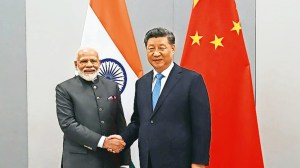New thalassaemia hope,cord blood from non-related donors
City Anchor: Cord blood stem cells from unrelated donors play critical role in treating genetic disorders.
Subjecting him to blood transfusion every month had been a painful chore for parents of Swaraj Jagnade born with thalassaemia major. The blood transfusions began in 2008,two months after he was born.
The transfusions finally stopped last year.
Hope for Swaraj came in the form stem cells from cord blood of an unrelated donor transplanted into his bone marrow. He has not received any blood transfusion since last July.
Bone marrow is where red blood cells are produced. Unrelated cord blood or placental blood is the new hope for thalassaemia patients. The problem with cord blood from the mother or close relatives is that it may have the same genetic make-up that causes thalassaemia. However,if a suitable match without the defect is found,cord blood of own family members can double the success rate of such transplants. Swaraj had no luck with cord blood from relatives.
Cord blood stem cells from unrelated donors play a critical role in treating several genetic disorders but Swarajs is a rare case,the first in Pune and perhaps the second case in India of unrelated cord blood stem cells being transplanted to cure thalassaemia major.
Beta thalassaemia major is an inherited blood disorder that occurs when genes that help in production of haemoglobin,the protein in red blood cells that binds to oxygen and carries it throughout the body,are flawed.
Dr Vijay Ramanan,haematologist at Ruby Hall Clinic who performed the operation on Swaraj,said beta thalassaemia major patients cannot use cord blood from own family members for transplant,since the stem cells could have the same genetic defects.
Transplants using cord blood from family members are nearly twice as successful as transplants using cord blood from non-relatives, he said.
If a match is not found in the family,patients need to find stem cells from a donor who is a genetic match,said Ramanan.
We did not have any matching donor from among family members, Swarajs father Sachin Jagnade told Newsline.
Sachin,who works at MIDC,Chakan,recalled their child being put through painful blood transfusions since 2008. We were lucky to get Human Leukocyte Antigen (HLA) matching done from an unrelated donor. After the transplant,my child who is five years old now has not had blood transfusions since July last year, he said adding the government should subsidise cost of such transplants.
We spent over Rs 20 lakh but I am happy my child is now cured, he said.
May 8 is World Thalassaemia Day.
Overall incidence of thalassaemia is an approximate 8 per cent of the population,and we need to prevent birth of thalassaemia major children, says Dr Nita Munshi,president of the Thalassaemia Society of Pune who says although blood transfusions in patients were done free of cost,the resultant effect,iron overload in body,needed costly drugs.
Expensive drugs are needed to remove excess iron. Moreover,transplant option is unaffordable for the common man, Munshi said.







